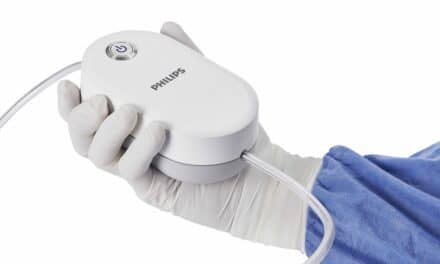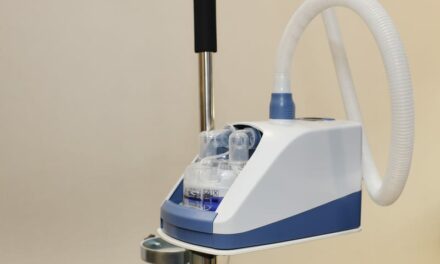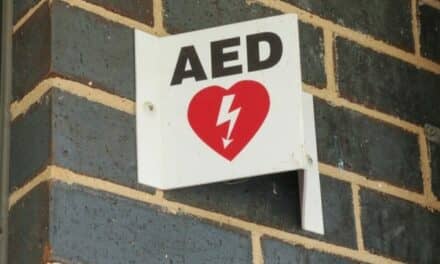Do you want to help train biomeds abroad?
By Patrick Lynch, CBET, CCE, CHTM, CPHIMS, FACCE
If you want an all-expense-paid trip to a developing country for a week, please read on. There is a way in which you can use your biomedical skills to help others and have a little fun at the same time. Biomeds Without Borders is a not-for-profit organization I started several years ago. After seeing the vast amount of medical equipment being sent to other countries that fails to operate within a year of arriving there, it became evident that something needed to be done. Biomeds Without Borders (BWOB) was born.
Incorporated as a non-profit in South Carolina, BWOB operated solely from the donations of biomeds across the United States. Whenever they buy new test equipment or clean out their shop of old repair parts, tools, or maintenance supplies, they send them to BWOB, where they are sent to hospitals in developing countries to be used for medical equipment repair.
For a complete list of needed items, visit our website at www.biomedswithoutborders.com. (By the way, BWOB rarely receives cash donations, but this, too, is much appreciated, as there always seems to be accessories and cables needed to make the donated items fully functional.)
The Usual Itinerary
Many of the trips abroad require more than one biomed, and foreign language skills are often (usually) needed. Upcoming trips include Guatemala to install a neonatal intensive care unit and Haiti to install an operating room, as well as a second trip to Guatemala to repair equipment that we installed three years ago. These trips will require at least two biomeds, at least one of whom must have Spanish or French skills and special technical abilities, such as ventilator repair.
Once you sign up as a future possible volunteer at our website, you will be notified when the details of these future trips are known. You may then reply if your skills and desired timeframe match the trip. As previously noted, all travel costs are 100% paid by our sponsor.
A typical trip usually begins on a Saturday. We leave the United States, travelling to the country in which we will work. We stay in the capital city Saturday night and enjoy a nice, relaxed team dinner, while we get to know one another.
On Sunday, we travel to the city in which we will be working. This may be a several hours’ drive. We have time to get settled in our hotel and usually have time to explore the town, while locating a good place to eat and maybe find a good local beer.
Monday morning, we try to arrive at the hospital as early as the locals start their day, usually around 9 a.m. We get tours of the hospital, locate the equipment that has been shipped in ahead of us, and set up a work area. After lunch, we are ready to get to work. If it is a new installation, we usually must work around construction workers, as the work is never ready at the prescribed time for our install. We begin unpacking equipment, checking it out, repairing shipping damage, and staging equipment for the installation.
Monitors are wall mounted, but there are never any central stations—they are not advanced enough to need them. Just getting bedside physiological monitoring is adequate. We typically quit work around 5 p.m. and head back to the hotel, relaxing and having a good dinner and talking about the progress we made, projecting our completion schedule and any expected problems into which we may run.
After a full day, everyone is ready to retire to their room by 8 p.m. or 9 p.m. to call home via Skype or the Internet, which is always available from the hotel lobby, if not the private rooms.
Installation continues Tuesday, Wednesday, and Thursday, with time taken as available to seek out and repair other hospital equipment that is reported as non-functional. When you realize that 50% of the equipment in the United States is “operation error,” it is easy to believe that more than 50% of the reported problems in developing countries are not hard failures, but some sort of soft problem that can be corrected by a trained biomed and good checkout procedures.
That is why we carry lots of power cords, duct tape, soldering guns, expoy (JB Weld), multi-outlet strips, extension cords, and basic repair materials to perform mechanical repairs to broken equipment. Repair parts are usually not needed.
Oh, did I mention that during this entire week-long project, we try to have representatives from the hospital’s maintenance department work alongside us? The hospital electricians are the closest thing these sites have to biomeds, so if we can, we invite them to work with us for a couple reasons.
First, they can be of great help because they know the hospital. But mostly, they can learn a lot about the equipment—how to test it, and how to use the test equipment that we will leave with them to troubleshoot the equipment once we leave.
Finally, we try to finish all our work by Thursday afternoon. If we can do that, we will have Friday free to sightsee or do something fun before heading back to the airport for our Saturday flight back to the States.
We always leave hundreds of pounds of test equipment, tools, maintenance supplies, and other assorted spare parts at the hospital to help keep their equipment running longer.
Our trips are always highly rewarding for the hospitals, their patients, our sponsors, and of course, ourselves. Please visit our website at www.biomedswithoutborders.com and sign up as a possible future volunteer, or see what unneeded shop supplies or tools you can send us that can get a new life in a developing country. Thank you.
Patrick Lynch, CBET, CCE, CHTM, CPHIMS, FACCE, is a biomedical manager with 40 years’ experience.





